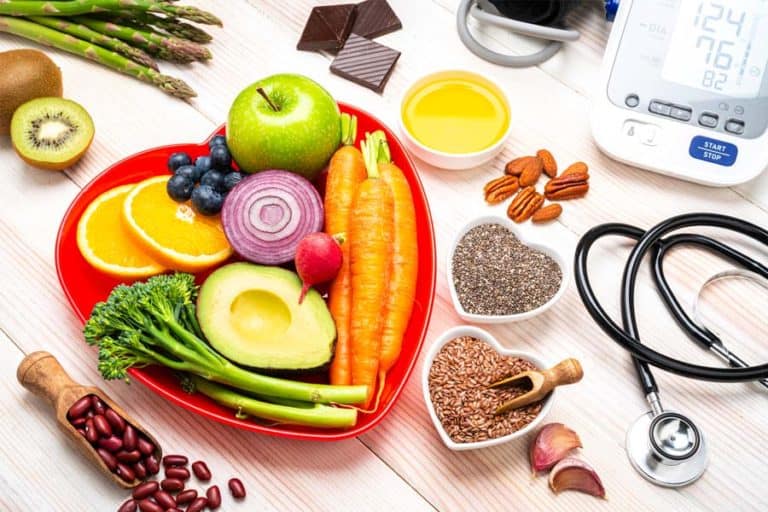Fast Track Calorie Burn: How To Get Into Ketosis In 24 Hours?

What Is Ketosis | Ketosis In 24 Hours | Symptoms And Signs | Foods For Quick Ketosis | Benefits | Tips To Avoid Risks | Monitoring Ketosis
Ketosis is a metabolic state where your body primarily uses stored fat as a source of energy instead of carbohydrates.
Typically ketosis is achieved through a low-carbohydrate, high-fat diet, such as the Keto Diet.
The process generally takes a few days to a week, depending on individual factors such as metabolism and activity levels.
But how to get into ketosis in 24 hours? While it’s challenging to achieve full ketosis in such a short time frame, there are several strategies you can implement to speed up the process.
What is ketosis?
Ketosis [1]Cleveland Clinic: Ketosis is a metabolic state in which the body shifts from using glucose as its primary source of energy to using ketones. Ketones are basically molecules produced from the breakdown of stored fat.
This shift occurs when the body’s carbohydrate intake is significantly reduced, and the liver starts converting stored fat into ketones to be used as fuel.
The process
The process of ketosis begins when the body’s glycogen stores, which are the stored form of glucose, become depleted. This usually occurs after a period of fasting or following a low-carbohydrate diet.
With limited glucose available, the liver starts breaking down fatty acids into ketones [2]Diabetes UK: ketones and diabetes, which are released into the bloodstream and transported to the cells for energy production.
Ketones can cross the blood-brain barrier, providing an alternative energy source for the brain, which typically relies on glucose.
The timeline
Typically, it takes 2-3 days or up to a week of restricting carbohydrates to induce ketosis. During the initial phase, the body may experience symptoms known as the “keto flu,” which can include fatigue, headache, irritability, and nausea.
However, once the body adapts to using ketones as the primary fuel source, these symptoms usually subside.
The duration of ketosis can also vary, depending on factors such as dietary choices and activity levels. It’s important to note that ketosis should be monitored closely.
How to get into ketosis in 24 hours?
If you want to induce ketosis in as little as 1 day, you can try the following methods:
1. Intermittent fasting and ketosis
Intermittent fasting, a dietary pattern that involves cycling between periods of fasting and eating. It has been observed that periodic fasting can trigger ketosis [3]Harvard Health Publishing: Time to try intermittent fasting? in the body.
By restricting the eating window and prolonging the fasting period, the body depletes its glycogen stores and starts relying on stored fat for energy, leading to the production of ketones. Thus, the 24 hour intermittent fasting can potentially help induce ketosis within 24 hours.
2. Exercise
Exercise can also be a useful tool to facilitate ketosis. Physical activity increases the body’s energy expenditure and depletes glycogen stores. This promotes the breakdown of stored fat for fuel.
Incorporating both aerobic and resistance exercises into a routine can help promote ketosis by using up glycogen and increasing fatty acid oxidation at a faster pace.
3. Increasing healthy fats intake
Consuming a diet high in healthy fats can aid in the process of getting into ketosis. Healthy fats, such as avocados, nuts, seeds, olive oil, coconut oil, and fatty fish, are rich sources of the types of fats that are converted into ketones in the body.
Increasing the intake of these healthy fats while reducing carbohydrate intake can help promote the switch from glucose to ketones as the primary fuel source, potentially leading to ketosis.
4. Reducing carbohydrate intake
One of the key aspects of inducing ketosis is reducing carbohydrate intake. Consuming a very low-carbohydrate diet, typically less than 50 grams per day, can rapidly deplete glycogen stores and prompt the liver to start producing ketones for energy.
This can help shift the body into a state of ketosis within 24 hours. It’s important to carefully plan and monitor the intake of carbohydrates to ensure adequate nutrition and avoid potential risks associated with very low-carb diets, and consultation with a qualified healthcare professional is recommended.
5. Exogenous Ketones
Exogenous ketones are supplements that contain ketones, which can be ingested to raise the ketone levels in the blood and potentially induce ketosis.
These supplements are available in various forms, such as ketone salts or ketone esters, and can provide an external source of ketones to the body.
However, it’s important to note that exogenous ketones should be used under the guidance of a healthcare professional.
6. Staying hydrated
Proper hydration is crucial in the process of getting into ketosis. Ketosis generally leads to dehydration which strains the kidneys. When this happens, the liver(which is central to the process of ketosis), has ends up fulfilling some of the kidneys’ functions. This results in slower-paced ketosis.
If you wish to trigger ketosis at a faster rate, then it is important to hydrate yourself and maintain your renal health. This will ensure that your liver breaks down fat more efficiently.
What does ketosis feel like: Ketosis symptoms?
The signs and symptoms of the body entering into ketosis can vary from person to person, and may include:
1. Weight loss
When carbohydrates are restricted, as is typically the case in a ketogenic diet, the body turns to fat stores as its primary source of fuel. This can lead to weight loss as the body breaks down stored fats and uses them for energy, resulting in a reduction in body weight and body fat percentage over time.
Weight loss during ketosis can also be attributed to the appetite-suppressing effects of ketones, which may lead to decreased caloric intake and subsequent weight loss.
2. Initial flu-like symptoms
Some people may experience what is commonly known as the “keto flu” during the initial stages of ketosis. This may include symptoms such as headache, fatigue, nausea, dizziness, irritability, and muscle cramps, which are typically temporary and resolve as the body adapts to using ketones as fuel.
3. Increased thirst and frequent urination
As the body shifts to using ketones as fuel, there may be an increased need for water intake, leading to increased thirst and subsequently increased urination.
4. Increased energy and mental clarity
Many people report feeling more energized and mentally focused when they are in ketosis. Studies have even observed a link between diet-induced ketosis and improved cognitive functioning [4]SpringerLink: The Effectiveness of Dietary-Induced Ketogenesis on Cognition in Older Adults: A Scoping Review of the Literature of the brain. This is because ketones are a more efficient and sustainable source of energy for the brain compared to glucose.
5. Decreased appetite
Ketones have appetite-suppressing effects, which may result in reduced hunger and decreased appetite, leading to potentially lower caloric intake.
6. Changes in breath odor
Ketones are released through breath as acetone [5]The American Journal of Clinical Nutrition: Breath acetone is a reliable indicator of ketosis in adults consuming ketogenic meals , which can cause a distinct odor often described as “fruity” or “sweet.” Some people may notice changes in their breath odor when they enter ketosis.
7. Changes in body odor
As the body shifts to using fats as the primary fuel source, there may be changes in body odor due to the breakdown of fatty acids and the release of ketones through sweat.
Foods that get you into ketosis fast
Certain categories of food promote ketosis while certain others might inhibit them. Here is a list of the type of foods you can consume when you wish to lose weight through ketosis:
- High-fat foods: Foods rich in healthy fats such as avocados, nuts and seeds, coconut oil, olive oil, and butter can promote ketosis by providing the body with the necessary fats for ketone production.
- Low-carb vegetables: Non-starchy vegetables like leafy greens, broccoli, and zucchini are low in carbohydrates and can be included in a ketogenic diet to help achieve and maintain ketosis.
- Moderate protein foods: Protein is an essential nutrient, but excessive protein intake can hinder ketosis. Opt for moderate protein sources like fish, eggs, and dairy products in appropriate portions.
Benefits of ketosis
Ketosis is not merely a weight loss aid. It can offer a host of other benefits as well. Here are 5 of the top benefits you are bound to experience as your body enters ketosis:
- Increased weight loss: Ketosis promotes the use of stored fats for energy, leading to potential weight loss and reduction in body fat percentage.
- Improved mental clarity and focus: Ketones provide energy to the brain, leading to improved cognitive function and mental clarity.
- Enhanced energy levels: Many people report increased energy levels during ketosis due to the efficient utilization of ketones for energy.
- Appetite suppression: Ketones suppress the appetite and promote satiety, resulting in reduced hunger and decreased caloric intake.
- Potential blood sugar management: Due to decreased carbohydrate intake and cutting down of sugar, ketosis may help in managing blood sugar levels, especially in individuals with type 2 diabetes or insulin resistance.
How to avoid the risks of going into ketosis fast?
- Gradual transition: Avoid abruptly cutting out carbohydrates from your diet to prevent potential side effects like the “keto flu.” Gradually reducing carbohydrate intake over time allows the body to adjust to the changes.
- Adequate hydration: Staying hydrated is crucial during ketosis to support kidney function and prevent dehydration.
- Balanced nutrition: Ensure you are still getting essential nutrients from a well-balanced diet even when following a ketogenic diet. Include a variety of foods and consult a healthcare professional or a qualified healthcare provider for personalized guidance.
- Regular monitoring: Regularly monitor your body’s response to ketosis through blood ketone levels, blood glucose levels, and overall health. Seek medical advice if you experience any concerning symptoms.
- Avoiding extreme measures: Avoid extreme measures such as extreme fasting or high levels of exogenous ketone supplements without proper supervision, as these can pose risks to overall health and well-being.
Monitoring Ketosis
Regularly monitoring ketosis is essential to ensure safety and effectiveness in a ketogenic diet or lifestyle.
Why it is important to monitor ketosis?
Monitoring ketosis allows individuals to assess the effectiveness of their diet. It helps to prevent potential risks associated with extreme ketone levels, such as ketoacidosis, which is a dangerous condition characterized by excessively high ketone levels in the blood.
Additionally, it allows individuals to personalize their approach to a ketogenic diet. This is extremely crucial since optimal ketone levels may vary for different individuals depending on factors such as age, gender, activity level, and overall health status.
Methods to check your Ketosis levels
- Blood ketone meters: Blood ketone meters measure the level of ketones in the blood and are considered the most accurate and reliable method for monitoring ketosis.
- Breath ketone meters: Breath ketone meters measure the level of ketones in the breath and provide a non-invasive alternative to blood ketone meters.
- Urine ketone strips: Urine ketone strips are an affordable but less accurate option for monitoring ketosis, as they measure the level of ketones excreted in urine and may not reflect real-time ketone levels in the blood.
- Signs and symptoms: Some signs and symptoms, such as increased energy, mental clarity, decreased appetite, and weight loss, can be indicative of being in ketosis, although they may not provide precise ketone level measurements.
Conclusion
Ketosis is an effective way to induce weight loss. Having said that, it comes with its own set of benefits and risks. If you plan to get your body to go into ketosis in 24 hours, make sure to do it under the guidance of an expert or a dietitian. Keep the information provided above in mind before making drastic dietary changes.
References
| ↑1 | Cleveland Clinic: Ketosis |
|---|---|
| ↑2 | Diabetes UK: ketones and diabetes |
| ↑3 | Harvard Health Publishing: Time to try intermittent fasting? |
| ↑4 | SpringerLink: The Effectiveness of Dietary-Induced Ketogenesis on Cognition in Older Adults: A Scoping Review of the Literature |
| ↑5 | The American Journal of Clinical Nutrition: Breath acetone is a reliable indicator of ketosis in adults consuming ketogenic meals |







